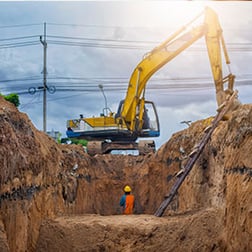One Bridge Solutions
Add Significant Value to Your Risk Analysis with Cognitive Integrity Management™
Two of the most significant challenges in performing quantitative pipeline risk analyses include the lack of complete and reliable datasets and not having the ability to properly align and integrate this data into the pipeline risk assessment. In this post, we will discuss the role of Cognitive Integrity Management in transforming quantitative risk analysis to address these challenges when looking at ILI anomalies and repairs.
Current Problem with Risk Analysis Processes:
A significant limitation seen in many risk assessments is the incomplete use of ILI data. The failure to leverage the entire ILI dataset is often due to the challenge of integrating the data. The spreadsheets received from ILI vendors present many challenges, from variations in the columns, formats, and names assigned to the anomalies, to the complexity of aligning the data to pipeline databases or to previous ILI runs. Even for those operators that do weld to weld alignments and store the data in an enterprise database, these calls are unlikely to be aligned to historical runs well enough to provide meaningful information to the risk assessment.
Cognitive Integrity Management™ Remedy for Accurate Risk Analysis:
These are the challenges addressed by our Cognitive Integrity Management™ solution. The platform allows for the normalization and integration of 100% of your ILI data, using data science and machine learning to provide the most comprehensive ILI data integration available. By using the output from Cognitive Integrity Management™, the risk engineer can avoid using filtered or aggregated summaries of the ILI findings, or worse yet, a single value for the joint or pipeline segment. The knowledge of where new fast-growing anomalies are appearing, and an understanding of the range of growth rates observed across all detected anomalies, can be leveraged to significantly improve the quantitative risk models being used today. The algorithms are frequently constructed to utilize this type of information if it is available, but single value constants or aggregated values are often utilized in place of specific localized data. Not leveraging the knowledge that comes from a full alignment and growth rate analysis is a significant limitation to these risk assessments in their usefulness for identifying locations for preventive and mitigative measures.
Uncover Existing Threats to Your Pipeline:
An additional advantage of utilizing the output from our solution is identifying threats and threat interactions that are revealed through the pattern detection algorithm and data science techniques to ensure that these threats are identified and considered in the risk assessment. With this improved threat identification, the risk assessment can provide better estimates of the probability of failure and improved prioritization of preventive and mitigative actions. This allows the risk engineer to extract more value from the investment in the inspections and use that knowledge to drive smarter risk-based decisions.
If you are interested in learning more about how our Cognitive Integrity Management™ solution can help integrate ILI data into your risk processes, please let us know. We can show you how you can better leverage your integrity inspection data utilizing machine learning and data science.


















